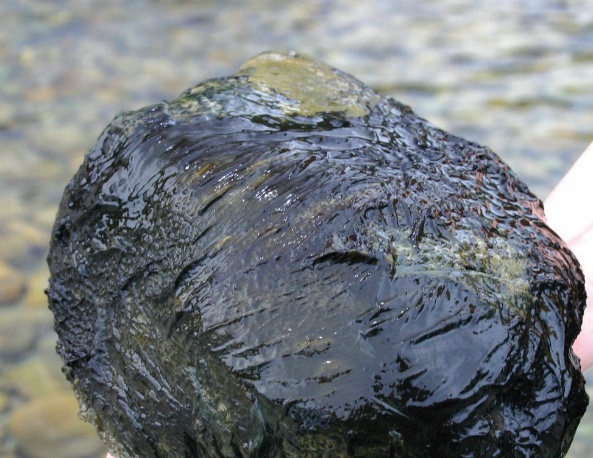Yesterday, the latest sample collected on 18 December found toxic algae (cyanobacteria) present at Lake Waihola, south of Dunedin, and potentially toxic algae has also been observed at Waianakarua River, in North Otago, says ORC’s Scientist – Water Quality, Helen Trotter, says.
“We’re asking the public and people with pets to take extra care when visiting rivers and lakes at present, as the warm conditions are becoming ideal for toxic algae to bloom,” Ms Trotter says.
The public should continue to avoid contact with the water at Butchers Dam and connected waterbodies, and at Lake Waihola, until further notice, she says.
Algae was found in Butchers Dam earlier this month, and concerns over the death of three dogs near Alexandra last Friday also raised concerns around the lower Manuherekia, while upstream at Ophir there are already signs in place warning of a toxic algal bloom.
“If you or your pet are experiencing symptoms after contact with contaminated water, please visit a doctor or vet immediately,” Ms Trotter says.

Planktonic cyanobacteria (toxic algae) in lakes
The dog deaths near Alexandra have not yet been confirmed as linked to algae, but people are being asked to be prudent when excising pets around any waterways at present and avoid any algae.
Ms Trotter notes both wet and dried algae above the waterline can still be toxic.
Rivers which are known cyanobacteria hotspots around Otago are Silver Stream, Mosgiel, Cardrona River, Central Otago, Manuherekia River, Central Otago, Hāwea River, Central Otago, Waianakarua River, North Otago.
Lakes which are known cyanobacteria hotspots in Otago are Lake Waihola, Tomahawk Lagoon in Dunedin and Butchers Dam in Central Otago.
Ms Trotter encourages anyone who thinks they have seen toxic algae to take a photo, contact ORC as soon as possible on its Pollution Hotline; 0800 800 033. ORC staff are rostered on over the holiday period to respond to environmental incidents.
“Prompt sightings by the public mean we can investigate and get signage up at access points as soon as possible,” she says.

Benthic cynaobacteria (toxic algae) in rivers
“Blooms are more common during the summer months, when low rainfall, warm temperatures, the right level of nutrients and more sunlight create an environment where it can thrive.”
“However, in the right conditions toxic algae can bloom rapidly and just a teaspoon is enough to cause serious illness, or death, so people are urged to remain vigilant around our waterways this summer. If in any doubt, stay out,” Ms Trotter says.
Two web sites people should be familiar with are LAWA’s www.lawa.org.nz/learn/factsheets/toxic-algae, and to find the latest toxic algae sightings, go to: www.orc.govt.nz/toxicalgaesightings.
Ms Trotter says ORC follows the Ministry for the Environment guidelines in managing our response to potentially toxic algae.
“We will put up warning signs at popular access points when toxic algae reach levels that pose a risk to human and animal health,” she says.
Watch for symptoms, signs of poisoning.
Exposure to toxic algae may cause symptoms such as:
- Skin rashes
- Nausea
- Tummy upset
- Tingling and numbness around the mouth or tips of fingers.
Signs of poisoning in animals include:
- Lethargy
- Muscle tremors
- Fast breathing
- Twitching
- Paralysis
- Convulsion
Find the latest toxic algae updates and sightings:
LAWA’s www.lawa.org.nz/learn/factsheets/toxic-algae
If you see anything which could be toxic algae, call ORC’s 24/7 Pollution Hotline on 0800 800 033 or email pollution@orc.govt.nz.
